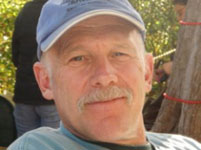Bigger is Better
By Howie Wolke
 This essay appeared in our Spring 2017 newsletter.
This essay appeared in our Spring 2017 newsletter.
When it comes to wilderness, bigger is better. This is as true from an ecological perspective as it is from that of the human wilderness experience.
The Wilderness Act defines wilderness (in part) as “…at least 5,000 acres of land or is of sufficient size as to make practicable its preservation and use in an unimpaired condition…” Although as a Montanan, 5,000 acres seems pretty small, the Act’s authors recognized that wilderness is fundamentally distinct from tiny areas of protected open space, such as many county parks or small state recreation areas, with size being one of its distinguishing characteristics.
From a human perspective, it is difficult to experience wilderness values such as awe, oneness with nature, solitude and challenge in a small woodlot or county park hemmed in by noisy roads or machines. The authors of the Wilderness Act rightly understood that in the face of our growing and expanding civilization, if folks accepted postage-stamp sized natural areas as “Wilderness”, then our perception of wilderness would lose its unique distinction. And as the wilderness idea is cheapened, so too, is wilderness on the ground.
From a biocentric perspective, conservation biologists assert that size of a protected area is crucial to maintaining native biodiversity. So is connectivity. And often ignored is the interior to edge ratio of protected lands.
Large wild areas with connectivity to other wildlands protect native species populations from inbreeding depression, random loss of adaptive genetic traits (common in small isolated populations), disease, and environmental events such as wildfire, flood or prolonged drought. Species that have specific habitat needs such as old growth forest or undisturbed sagebrush steppe are particularly vulnerable to the problems associated with small isolated habitats. So are large carnivores, which naturally occur in much lower densities than prey species, and thus are spread thinly across large areas. Many of these vulnerable creatures are called “wilderness dependent species” and small isolated wildland tracts do not promote their survival.
I also mentioned interior to edge ratio. As human population growth continues to spiral out of control, most protected wildlands are increasingly impacted by human activities on surrounding lands. Logging, mining, roadbuilding, road “hunting”, poaching, urban sprawl, off road vehicles, livestock grazing, fences, power corridors, dams and diversions and more all serve to isolate wilderness areas. When wilderness boundaries are amoeba-shaped with “cherry-stemmed” exclusions, we create lots of edge compared with more secure interior habitat. Along the edges are where many of these destructive human activities occur. So not only is bigger better, but so are areas with holistic boundaries that minimize edge.
The problem is that what works best on the ground is often forsaken by the increasingly sketchy politics of wilderness conservation. Many conservation organizations now get funding from foundations that demand “collaboration” with traditional wildland opponents. And all too often these collaborations produce “wilderness” boundaries that exclude all or most of the potential conflicts in order to mollify the opposition. These processes create compromised wilderness units that are small, isolated and laden with boundary intrusions and non-wilderness corridors that create much edge and minimal secure interior habitat. Moreover, so-called wilderness proponents often accept or even promote special provisions in wilderness bills that clash with the intent and letter of the Wilderness Act. Or, they sometimes actually support agency actions that overtly violate the Wilderness Act.
Of course, our political system is based upon compromise, and compromise works when both sides have legitimate concerns and common goals. When it comes to wilderness, though, we do well to remember that each wilderness debate begins with an already greatly compromised remnant wildland. And also, wilderness areas laden with legislated exceptions to the letter of the Wilderness Act are not really wilderness in any meaningful sense of the word.
So, bigger is better. In North America, we find healthy populations of grizzly bear, wolf, lynx and many other species only where big wilderness is a dominant landscape feature. Healthy watersheds thrive only where the entire watershed is protected. Also, dynamic disturbance-driven natural vegetation patterns can be maintained only in large protected landscapes. For example, natural wildfire patterns are not allowed to prevail in small nature preserves near suburbs or commercial timber stands.
In other words, temptations to compromise wilderness in terms of size, “collaborated” boundary exclusions and diminished internal untrammeled qualities are immense in 21st century industrial America. Protecting and maintaining real wilderness won’t get easier. But unless wilderness organizations develop a better understanding of what real wilderness is and the importance of size, connectivity and wholeness, it is unlikely that the very concept of wilderness will survive for many more generations. And I mean generations of the four-leggeds and all members of the biotic community, in addition to the upright two-legged great apes that we call “human”.
Howie Wolke is an ornery old wilderness guide from southern Montana and is a recent past President of Wilderness Watch.
